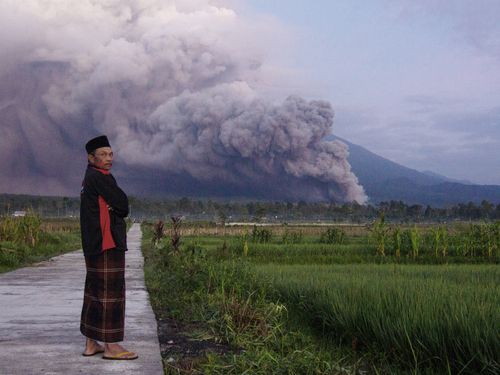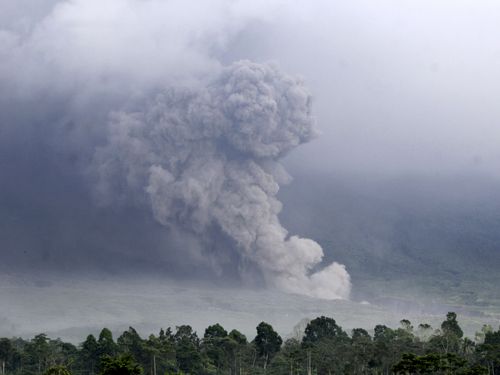Monsoon rains eroded and finally collapsed the lava dome atop 3676-metre Mount Semeru, causing the eruption, according to National Disaster Management Agency spokesperson Abdul Muhari.
Several villages were blanketed with falling ash, blocking out the sun, but no casualties have been reported.

Several hundred residents, their faces smeared with volcanic dust and rain, fled to temporary shelters or left for other safe areas.
Thick columns of ash were blasted more than 1500 metres into the sky while searing gas and lava flowed down Semeru’s slopes toward a nearby river.
Increased activities of the volcano on Sunday afternoon prompted authorities to widen the danger zone to eight kilometres from the crater, said Hendra Gunawan, who heads the Volcanology and Geological Hazard Mitigation Center.

He said scientists raised the volcano’s alert level to the highest and people were advised to keep off the southeastern sector along the Besuk Kobokan River, which is in the path of the lava flow.
Read Related Also: Former TNA, Impact Wrestling broadcaster Don West dead at 59
Several hundred others suffered serious burns and the eruption forced the evacuation of more than 10,000 people.
The government moved about 2970 houses out of the danger zone.
Semeru, also known as Mahameru, has erupted numerous times in the last 200 years.

Still, as is the case with many of the 129 active volcanoes in Indonesia, tens of thousands of people continue to live on its fertile slopes.

Aerial reconnaissance photographs show extent of damage in Tonga







